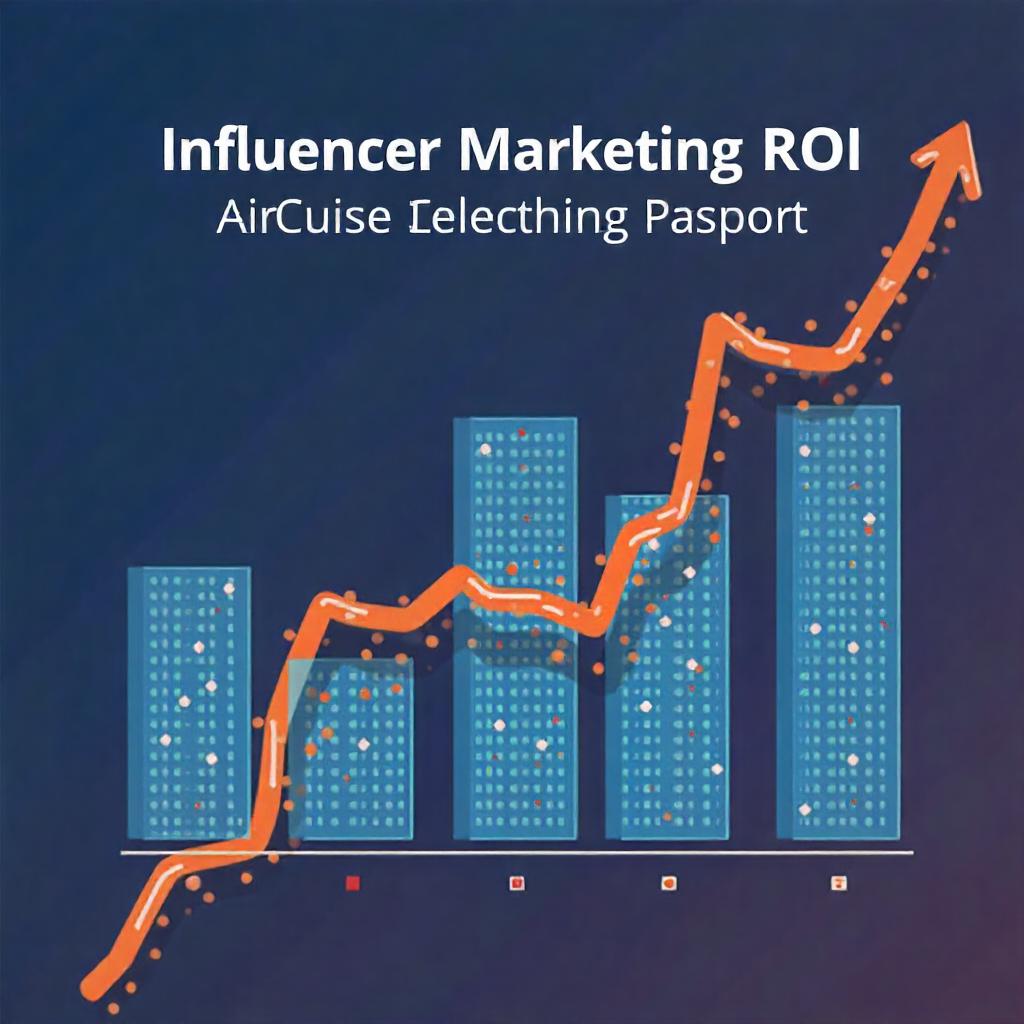Influencer marketing has become a key strategy for brands looking to expand their reach and drive conversions. However, measuring the return on investment (ROI) for influencer marketing campaigns can be challenging, as it involves both tangible and intangible benefits. To effectively gauge the success of influencer partnerships, it’s essential to focus on the right metrics and analyze the impact on both short-term and long-term business goals.
1. Understanding Influencer Marketing ROI
ROI in influencer marketing refers to the value generated from an influencer campaign compared to the cost of executing it. It’s not just about direct sales but also includes brand awareness, audience engagement, and customer loyalty. Calculating ROI helps determine whether the money spent on influencers is resulting in a positive return in terms of both tangible (e.g., sales) and intangible (e.g., brand sentiment) results.
2. Key Metrics for Measuring ROI
Several metrics can help assess the ROI of influencer marketing:
- Revenue and Sales: The most straightforward measure is the direct revenue or sales generated from the influencer campaign. This can be tracked using unique discount codes or affiliate links.
- Engagement Rate: Metrics like likes, comments, shares, and click-through rates (CTR) on social media posts provide insights into how well the audience is interacting with the influencer’s content.
- Brand Awareness: Impressions, reach, and share of voice (SOV) help assess how many people were exposed to the brand through influencer content.
- Customer Acquisition Cost (CAC): This measures how much it costs to acquire a new customer through the influencer campaign. It’s calculated by dividing the total cost of the campaign by the number of new customers generated.
- Conversion Rate: Tracks the percentage of people who took a desired action (e.g., making a purchase, signing up for a newsletter) after engaging with influencer content.
- Sentiment Analysis: Qualitative feedback, reviews, and comments help evaluate how audiences feel about the brand or product after seeing influencer posts. Positive sentiment can drive long-term customer loyalty.
- Click-Through Rate (CTR): Measures how many people clicked on the links provided by influencers, such as links to product pages or special offers.
Start Your Digital Business Today for Just 20 USD
3. Methods for Tracking ROI
- Affiliate Links and Promo Codes: Provide influencers with unique affiliate links or promo codes to track direct purchases generated from their content. This method is great for calculating revenue-based ROI.
- UTM Parameters: Add UTM parameters to URLs shared by influencers to track traffic and conversions in analytics platforms like Google Analytics.
- Google Analytics: Set up custom goals and funnels in Google Analytics to monitor how visitors from influencer campaigns navigate through your site and convert.
- Social Media Analytics Tools: Platforms like Instagram Insights, Facebook Analytics, and third-party tools like Sprout Social or Hootsuite offer data on engagement and reach for influencer posts.
4. Calculating ROI for Influencer Campaigns
A simple formula for calculating ROI is:ROI=Revenue from Campaign−Cost of CampaignCost of Campaign×100\text{ROI} = \frac{\text{Revenue from Campaign} – \text{Cost of Campaign}}{\text{Cost of Campaign}} \times 100ROI=Cost of CampaignRevenue from Campaign−Cost of Campaign×100
For example, if your influencer campaign cost $10,000 and generated $25,000 in sales, the ROI would be:ROI=25,000−10,00010,000×100=150%\text{ROI} = \frac{25,000 – 10,000}{10,000} \times 100 = 150\%ROI=10,00025,000−10,000×100=150%
This formula can be adjusted depending on the specific KPIs (key performance indicators) relevant to your goals, such as engagement or brand awareness.
5. Long-Term vs. Short-Term ROI
While short-term ROI can be directly linked to sales and conversions, influencer marketing also provides long-term benefits that contribute to brand growth. Here are some key considerations:
Digital Marketing for Beginners: Learn Affiliate Marketing and Facebook Ads
- Brand Loyalty and Advocacy: Influencers who align with your brand can help foster long-term loyalty among their followers, which can result in repeat business and referrals over time.
- Influencer Relationships: Building lasting relationships with influencers can lead to more cost-effective campaigns in the future as they become advocates for your brand.
- Content Longevity: Influencer content often has a longer shelf life, continuing to reach audiences over time. Old influencer posts can continue driving traffic and sales months after they were initially published.
6. Common Challenges in Measuring ROI
- Attribution: Tracking the exact impact of influencer content on sales or brand awareness can be difficult, especially when consumers interact with multiple touchpoints before converting.
- Varying Metrics Across Platforms: Different social platforms offer different engagement metrics, making it harder to compare performance across channels.
- Non-Monetary Goals: Many influencer campaigns focus on building relationships or brand awareness, which may not have immediate financial returns, making it harder to measure ROI.
- Influencer Authenticity: Ensuring that influencers are genuinely promoting your brand to their followers, rather than merely promoting sponsored content, is crucial for authentic engagement.
7. Improving Influencer Marketing ROI
- Select the Right Influencers: Ensure that influencers align with your brand’s values and have an engaged audience that matches your target demographic.
- Set Clear Objectives: Establish specific goals for each campaign, whether it’s sales, engagement, or awareness, and tailor your ROI measurement strategy accordingly.
- Track Results in Real Time: Use real-time data to adjust campaigns as needed, especially in ongoing influencer partnerships. If a campaign isn’t performing well, modify your strategy mid-course.
- Leverage Micro-Influencers: Micro-influencers tend to have highly engaged audiences and can provide more authentic connections, often delivering higher ROI for lower costs.
8. Tools for Influencer Marketing ROI Tracking
Several platforms and tools can help measure and improve ROI in influencer marketing campaigns:
Unlock the Secrets to Starting a Successful Career in Digital Marketing!
- Influencity: An influencer marketing platform that tracks campaign performance and ROI through detailed analytics.
- Traackr: A platform offering influencer relationship management and performance tracking to measure ROI.
- Upfluence: A software that provides real-time campaign tracking and influencer performance analysis.
- Google Analytics: For tracking web traffic and conversions driven by influencer campaigns.

